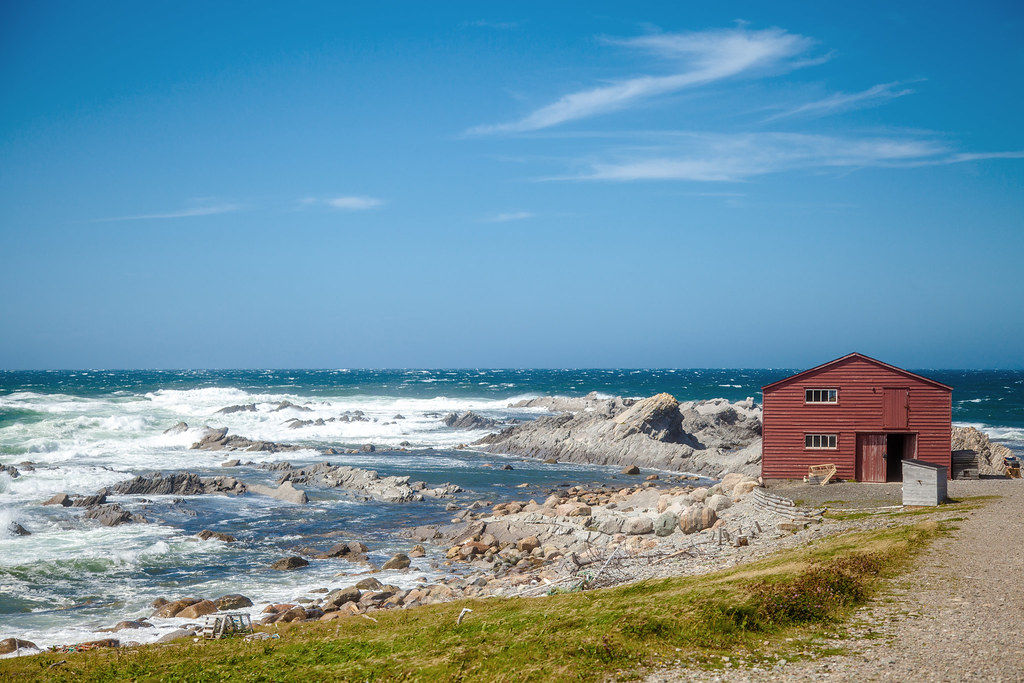
OUR PROGRAMS
AQUATIC SPECIES
AT RISK
Aquatic Species at Risk (ASAR) refer to species that are Extirpated, Endangered, Threatened, or of Special Concern under the Species at Risk Act or are assessed as ‘at-risk’ by the Committee on the Status of Endangered Wildlife in Canada (COSEWIC). The species mentioned below are connected directly or indirectly to the Gros Morne region.
The waters surrounding Gros Morne support a rich diversity of marine life and are home to many ASAR. These species are at risk due to a number of threats, some of which are associated with human activities. For example, lost, abandoned or derelict fishing gear poses an entanglement risk to marine mammals, sharks, leatherback sea turtles, groundfish such as wolffish, and others. In addition, research on migration patterns, habitat preferences, and strategies to mitigate human impacts are key to understanding and protecting these species. Our research-oriented work on ASAR emphasizes the importance of community involvement and sustainable practices to protect ASAR in Gros Morne. We aim to improve our understanding of the biology of ASAR in the Gros Morne region to facilitate informed decision-making while identifying conservation opportunities and mitigating threats where possible.
SARA Listed Species
.jpg)
(Anarhichas lupus)
_JPG.jpg)
Leatherback Sea Turtle (Dermochelys coriacea)
.jpg)
North Atlantic Right Whale (Eubalaena glacialis)
COSEWIC Assessed Species
.jpg)
(Phocoena phocoena)
.jpg)
(Amblyraja radiata)
.jpg)
(Sebastes mentella)
.jpg)
(Isurus oxyrinchus)

Zooplankton Surveys and Acoustic Monitoring
Studying aquatic species at risk doesn’t always mean studying the species directly—we can learn a lot about these species by studying the food they eat and the habitats they live in! Our collaborative research with Dalhousie University does just that. From Gros Morne to the southwest coast of NL, we are studying Calanus copepods, which are important zooplankton species and primary prey for forage fish like Atlantic mackerel and marine mammals such as the critically endangered blue whale and North Atlantic Right Whale (NARW). Together, we collect samples using plankton nets in areas that may overlap with migration routes and feeding areas of these species to determine the density, distribution, abundance, and nutritional quality of the copepods. As the climate and ocean temperature changes, this research will help us better understand and predict the feeding patterns and migration routes of these endangered whales and commercially important forage fish species. At the same time, in partnership with the private consulting company Edgewise Environmental, we’re deploying hydrophones (underwater microphones) to record the underwater soundscape at the same locations where we sample plankton. This will allow us to detect and assess the abundance and distribution of at-risk marine mammal species like the NARW off the west coast of Newfoundland. It will also allow us to determine the level of man-made noise in these areas and assess the potential impacts on the movement and feeding activities of these species.

Redfish Genetic Research
Bonne Bay is home to a special population of Acadian redfish called the Bonne Bay Acadian Redfish. This population is thought to be isolated from the Acadian Redfish population found in the rest of the Gulf of St. Lawrence due to limited water exchange and a shallow sill at the entrance of Bonne Bay’s East Arm. These redfish may therefore be unique to this area, which covers about 72 square kilometres. These redfish are generally located in the deeper parts of the East Arm, with depths typically greater than 150 m, but have occasionally been observed in depths of around 40m. While they share many traits with other Acadian Redfish, we still have much to learn about their biology and distinctive features. Learning more about these unique redfish is important to protect their genetic diversity and make sure they thrive in Bonne Bay's marine environment. To do this, we are collaborating with researchers from Memorial University of Newfoundland and Fisheries and Oceans Canada (DFO) to confirm the genetic uniqueness and evaluate their population size and distribution. Improving our understanding of this unique species and identifying any threats directly impacting it will also help COSEWIC and DFO make more informed management decisions to protect the decline of this small population. For this research, we are using a combination of targeted sampling, citizen science, environmental DNA analysis (analysis of DNA in water samples to determine what species are present) and ROV exploration.

Exploring the Habitats of Species at Risk
We’re exploring and monitoring the health of habitats where ASAR live. Using our ROV, GoPros and other complementary survey methods, we have been mapping habitats and documenting ASAR we encounter in Gros Morne including redfish, wolffish and American eel. This information will allow us to better understand the biology of ASAR in the region and help identify effective conservation strategies to ensure their preservation for future generations. Learn about our sightings so far (link)!


.jpg)

.jpg)
.jpg)
.jpg)
.jpg)
.jpg)
.jpg)